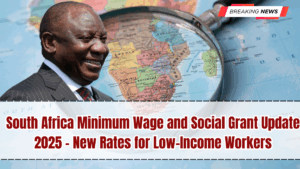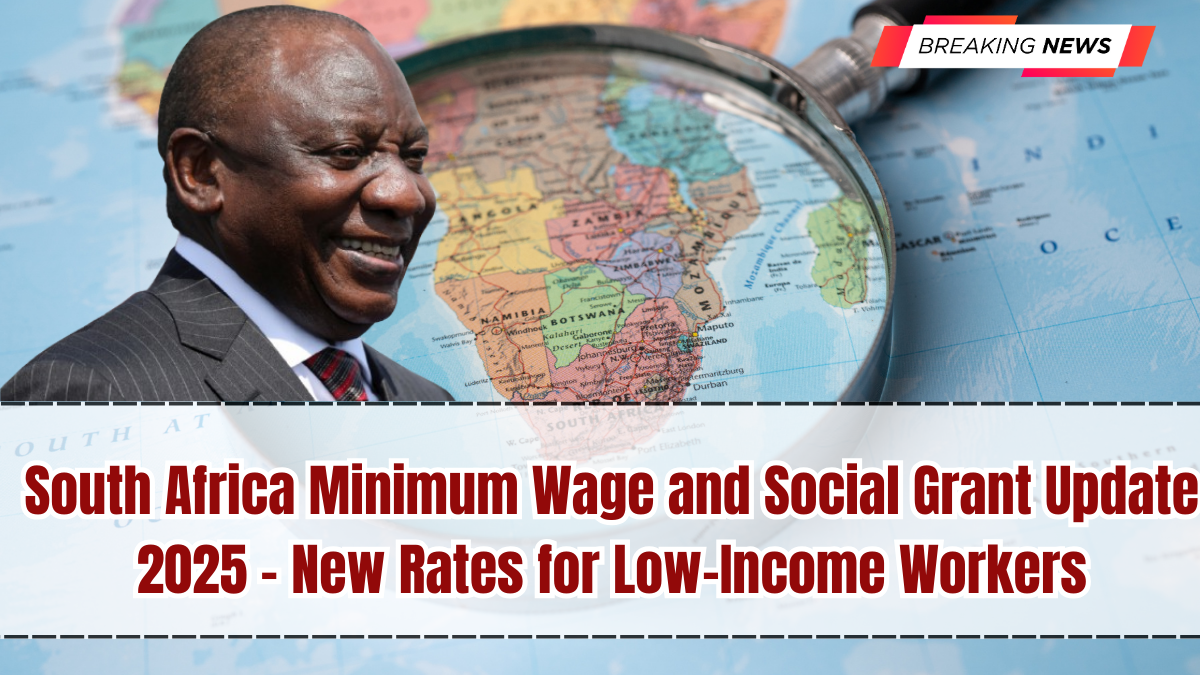The South African government has announced a significant policy change in September 2025 that directly affects millions of citizens. The SA minimum wage September 2025 adjustment now aligns with increases in social grants, ensuring that workers and beneficiaries alike receive better financial protection against inflation and rising living costs. This dual update represents a major step toward tackling poverty, reducing inequality, and building a fairer society for low-income households.
For years, wage earners and grant recipients have argued that incomes have not kept pace with the cost of essentials such as food, rent, transport, and electricity. By linking minimum wage adjustments with social grant increases, the government is addressing this gap and creating a more balanced system of income support. The September 2025 update not only benefits workers earning wages but also pensioners, caregivers, and vulnerable households dependent on social grants.

What is the New Minimum Wage?
The SA minimum wage September 2025 has been increased to R27.90 per hour, up from the previous R25.50. This adjustment means that a full-time worker employed for 45 hours per week will now earn just over R5,000 per month. While not a dramatic increase, it marks an important step in improving the standard of living for low-income workers who often struggle to meet basic household expenses.
The new rate applies across all industries, including agriculture, domestic work, and expanded public works programs. Employers are required by law to comply with the updated wage, and penalties for non-compliance remain strict.
Alignment with Social Grants
What makes the SA minimum wage September 2025 update unique is that it coincides with increases in key social grants distributed by SASSA. Old age pensions, child support grants, and disability benefits have all been raised by between 5% and 7% to reflect higher living costs. This parallel increase ensures that both working and non-working low-income citizens are supported in maintaining purchasing power.
By aligning the two systems, the government is addressing a long-standing criticism that while wages may rise, grants often lag behind, leaving vulnerable households behind. The September 2025 update closes this gap, creating a more equitable system of income support.
Impact on Workers
For workers, the new minimum wage offers immediate relief from rising costs. It gives employees in industries such as domestic work, farming, and retail more financial stability. While the increase may not fully cover inflation, it still reduces financial pressure and helps households afford essential goods.
The adjustment also boosts worker morale and productivity, as employees feel valued and protected by legislation. Unions have welcomed the decision but continue to push for further increases to match living wage levels in future adjustments.
Impact on Social Grant Beneficiaries
For millions of South Africans dependent on social grants, the September 2025 update brings equally important relief. The old age grant has been raised to R2,350 per month, while the child support grant now stands at R550. Disability grants and foster care grants have also been adjusted upward.
This means households supported by grants will be better able to cover food, school supplies, healthcare, and utilities. The alignment with the minimum wage ensures that no segment of the population is left behind in the government’s fight against poverty.
Broader Economic Effects
The SA minimum wage September 2025 update, combined with social grant increases, is expected to stimulate local economies. When workers and beneficiaries have more money, they spend more in their communities, supporting small businesses and creating demand for goods and services.
However, employers have expressed concerns about higher wage bills, especially small businesses already struggling with tight margins. The government has responded by offering limited tax relief and financial support programs to help smaller enterprises adjust.
Preparing for the Transition
Both workers and employers should familiarize themselves with the new wage rates. Employees should check payslips to ensure compliance, while employers must update payroll systems to reflect the increase. Beneficiaries of SASSA grants should monitor payment schedules closely and confirm their updated amounts.
Awareness campaigns are being rolled out nationwide to educate citizens about their rights and responsibilities under the September 2025 update.
Conclusion
The SA minimum wage September 2025 and accompanying social grant increases mark an important milestone in South Africa’s commitment to fairness and poverty reduction. By aligning the two systems, the government ensures that both workers and beneficiaries receive much-needed relief at a time of rising inflation. While challenges remain, particularly for small businesses, the overall impact is positive, offering hope for a stronger and more inclusive economy.
FAQs
What is the new minimum wage in South Africa as of September 2025?
The new minimum wage is R27.90 per hour, up from R25.50.
Do all industries have to follow the new wage rate?
Yes, the increase applies across all industries, including agriculture, domestic work, and public works programs.
What social grants were increased in September 2025?
Old age pensions, child support grants, disability grants, and foster care grants were all raised by 5% to 7%.
How will this impact low-income households?
Households will see higher incomes whether through wages or grants, giving them more purchasing power for essentials.
What happens if employers do not comply with the new wage?
Employers who fail to meet the new wage requirements face legal penalties, fines, and potential closure of operations.
Click here to know more.
